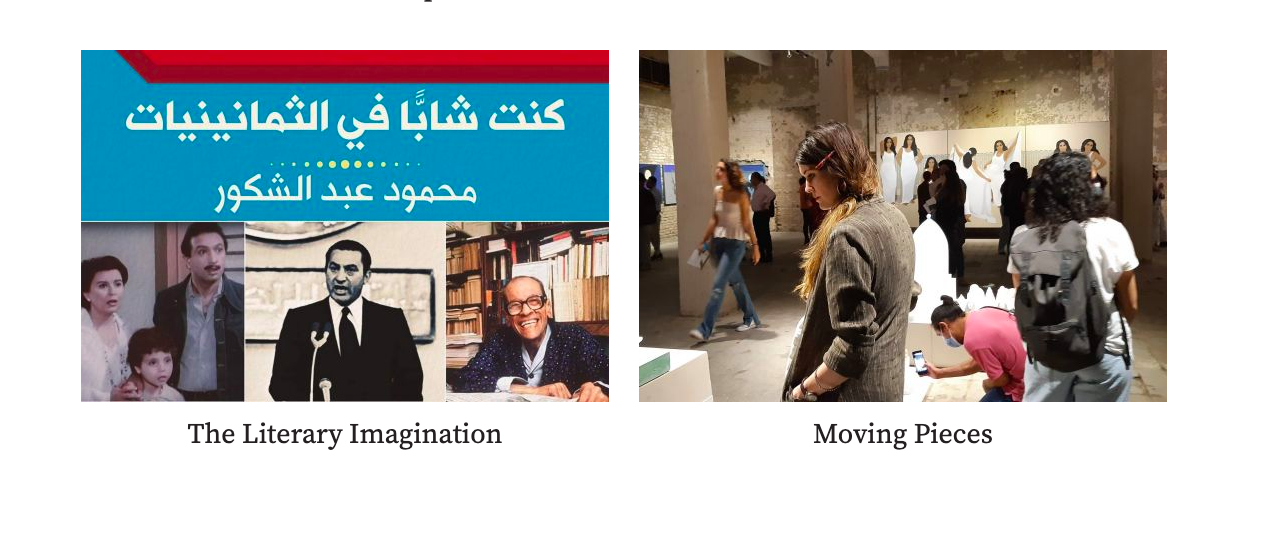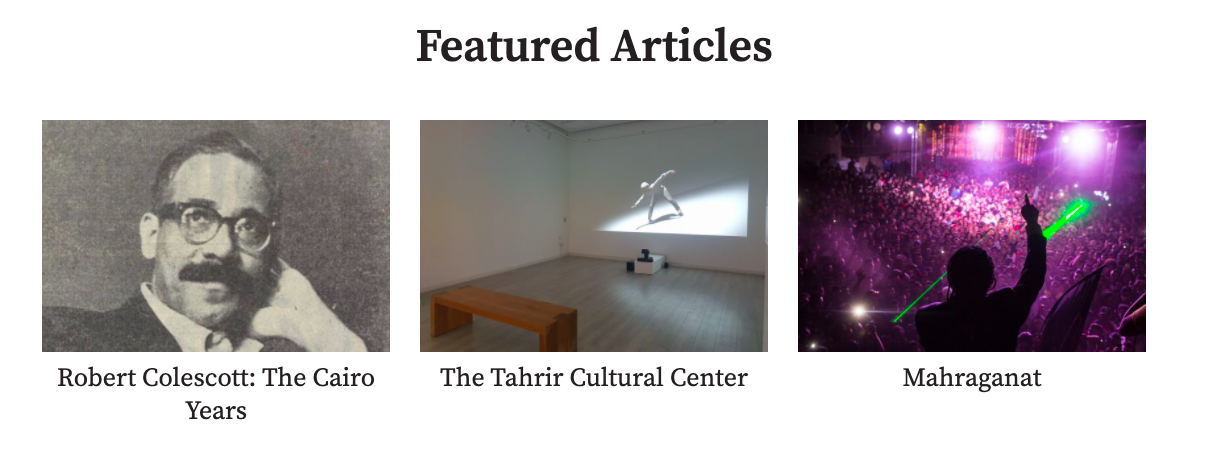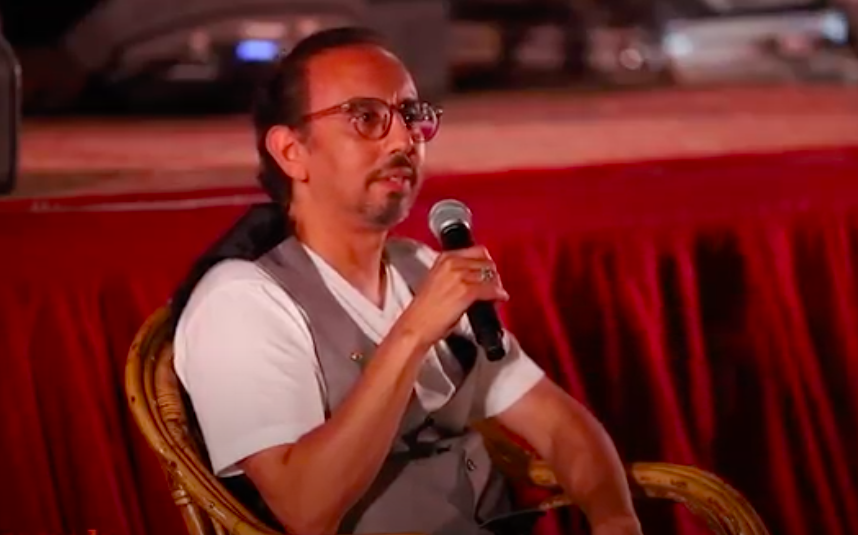
Jacaranda: Advancing the Arts
For Tarek Atia, director of AUC's Tahrir Cultural Center, the arts in Egypt have a shining opportunity to reach the global stage. He directed the production of the TCC’s latest project, Jacaranda, a new platform for showcasing and discussing the arts, with that in mind — to help advance innovations in Egyptian arts by delving deep into the sector’s diversified areas.
“This is a platform that is meant to cover, discuss and present some of the most important and pressing topics in the arts and culture field that are relevant not just to Egypt, but also the world,” Atia said. “The publication is inspired by the fact that there is a very active culture scene, and there's so much going on. We just need to pause and look and a little bit more closely at both the big picture and the details at the same time.”
Just like the Tahrir Cultural Center itself, Jacaranda’s aim is to provide space to experience, critique and advance the arts.
The pilot issue of Jacaranda spans six major topics: Mahraganat music, non-fiction literature, cinematic education, visual arts, digital video and talent discovery. There is also a special feature on how the coronavirus has and continues to affect the arts scene.
In the visual arts article, “Moving Pieces,” the author discusses the balance – or lack-of -- between commercial and nonprofit parts of the arts scene in Egypt, speaking to and surveying interior designers and decorators as well as curators at museums and cultural institutions.
“We're asking the question, ‘who are the kingmakers of art in Egypt?’ So what we hope to do is to just talk about it — we're not answering the question. We're just posing the question and providing a lot of debate,” Atia said.

Another big piece talks about Mahraganat, the Egyptian music genre that has been a topic of debate and controversy for years. Jacaranda looks at the growth and evolution of this genre, explaining how it came to be one of the most popular — and disputed — musical genres in Egypt.
“In the case of the Mahraganat story, everybody over the last year has either heard of it, heard the debate about it, or loves or hates it,” Atia said. “So, go deep into the story of how this art form came about all the way up to the current debate. And it's an enjoyable story.”

When you take a first glance at Jacaranda, you’ll take it as a regular publication. But open it up, and it’s most probably unlike anything you’ve seen before. Unlike other publications that are printed vertically, Jacaranda is printed horizontally, with text running from left to right, and from right to left for Arabic articles. Atia said this unique design is to give it a different feel from your traditional ones and to make it an actual bilingual magazine, not an English one mirrored with its Arabic translation.
He spoke on the importance of a leading global university to produce a bilingual magazine.
“Our language of instruction is English; however, we are in Egypt, and much of the culture and arts being produced in Egypt is in Arabic, whether it's literature, film or music. So, we wanted our publication to be accessible to everybody. So if you want to read these high-level pieces in English, they're available, and if you want to read them in Arabic, they're available,” he said.
The horizontal layout is also somewhat of a breakthrough in magazine design, making use of space more efficiently and giving readers a different experience.
“We were able to reduce the amount of space for each article and still provide both languages. And you just get this much more seamless experience, and in a way I think that's very representative of AUC. It's kind of bridging the different cultures and communication styles that people have,” Atia said.

This design development came about via a holistic process by which Jacaranda’s editors – Atia, Ehab Abdel-Hamid and Yasmine El Dorghamy, worked closely with the designer, Engy Aly, who proposed it as a way to shake up the standard ways bi-lingual publications are made. The other key team members were photo editor Ahmed Montasser, production coordinator Nada Nosseir, and translators Abdel-Hamid and Humphrey Davies.
The pilot issue was made possible via a grant from the Mellon Foundation, and involved close collaboration with AUC’s Department of the Arts. Atia stressed the importance of AUC taking the lead in spearheading discussion and innovation in the arts field. “If you're able to show that as a university, you can lead in agenda setting and discussions, then someone who's interested in the arts will basically say, ‘Oh, this is a good place for me to learn more,’” he said.
In addition to its already active cultural calendar, starting September and until the end of the year, the TCC aims to have six Jacaranda-related events, each focused on a different topic of the first issue. Atia is aiming for the events to be engaging, thought-provoking and interactive for audiences.
Through Jacaranda and its events, Atia says the greatest impact will take place at the personal level.
“At its most basic form, I think your impact is felt if someone reads this and connects with it, whether it’s a student, a practitioner, or a professor who connects with something in here or learns something that changes their life in some way,” he said.
On the larger level, he says he hopes to see impact in different parts of the arts scene. For example, the piece “The Literary Imagination,” looks at how just about every genre of literature has major support from prizes, awards or cultural institutions, while non-fiction works are often left out. Maybe, he said, by highlighting this issue we will soon see an announcement of a new non-fiction prize.
“We're trying to actually have what we're discussing here inspire something to happen on the ground that improves the situation or moves it forward,” he said.
As for Egypt’s arts and culture scenes, Atia strongly believes that some of the most innovative and creative kinds of output could come out of Egypt in the coming period, given the digital transformation the world is going through. Again, this is covered by Jacaranda, which takes Amr Salama’s Paranormal, the first Egyptian TV show commissioned by Netflix, as a launching pad to look further at how the coming period may play out for music, art, theatre, talent discovery and more.
“If we can play any small part in making Egyptian culture or industry more aware of this tremendous opportunity, and maybe help it move towards positively engaging with that,” Atia says, “then we'll have a really, really good impact.”
If you would like to get a copy of Jacaranda, you can pick one up at TCC or submit a form via this link: https://jacarandaculture.com/.
